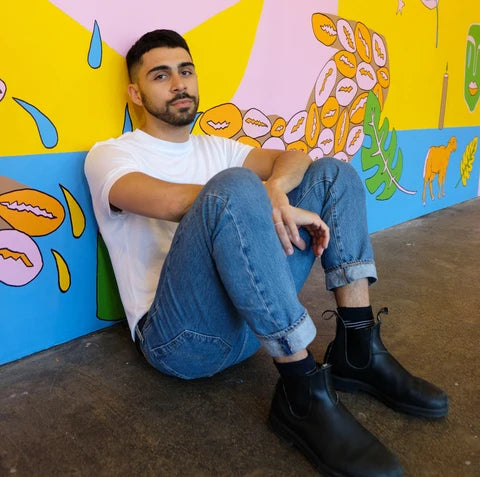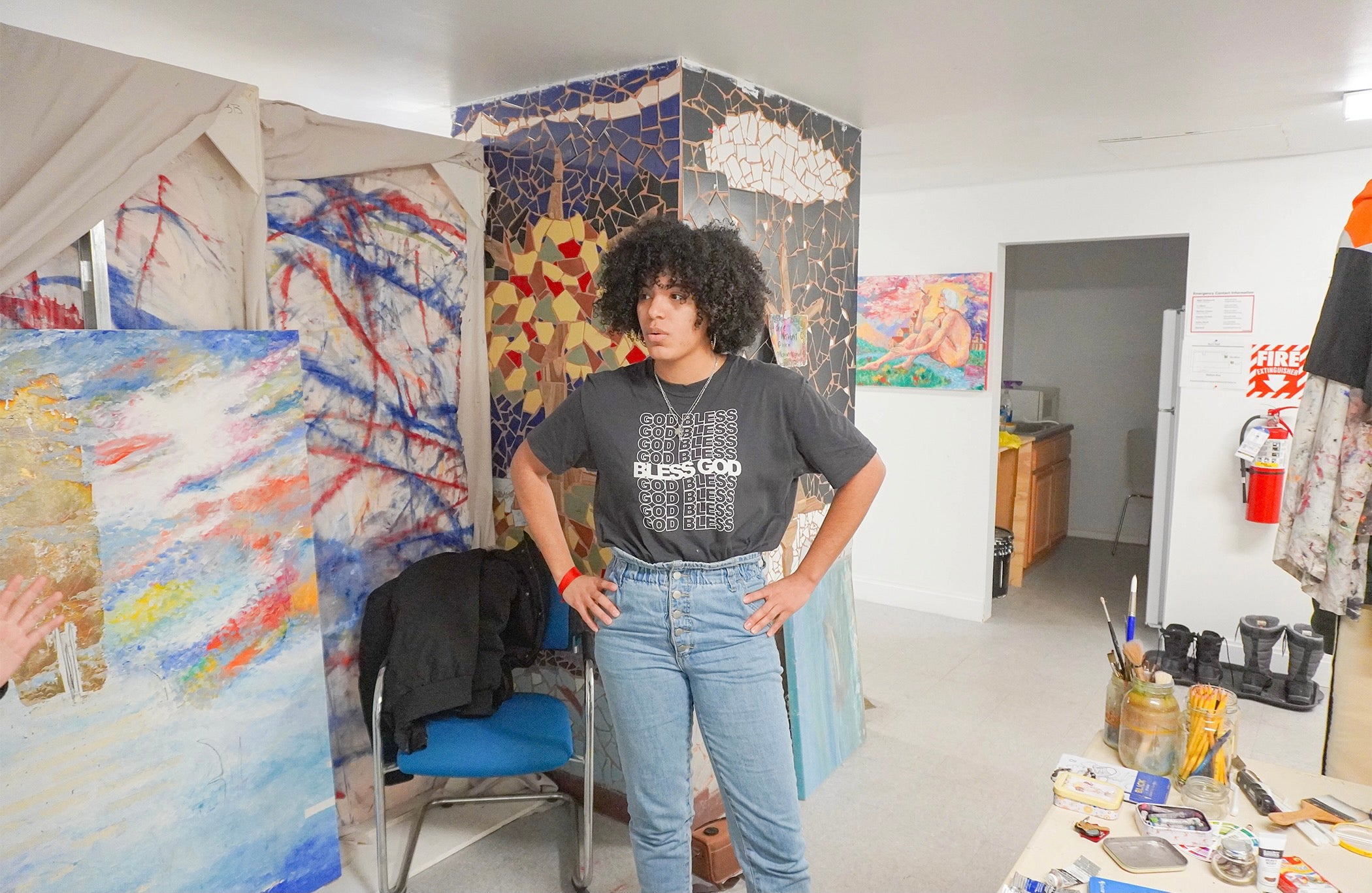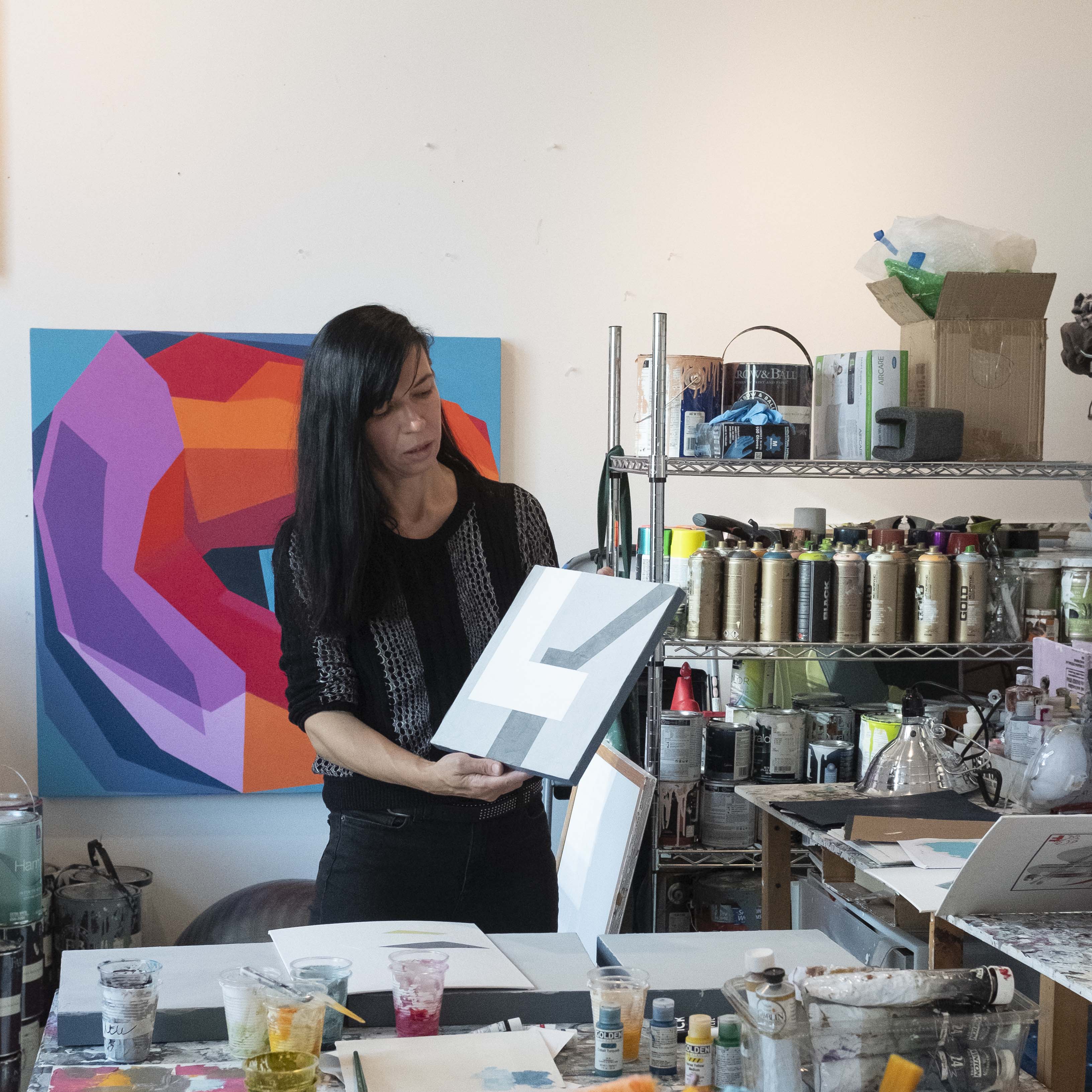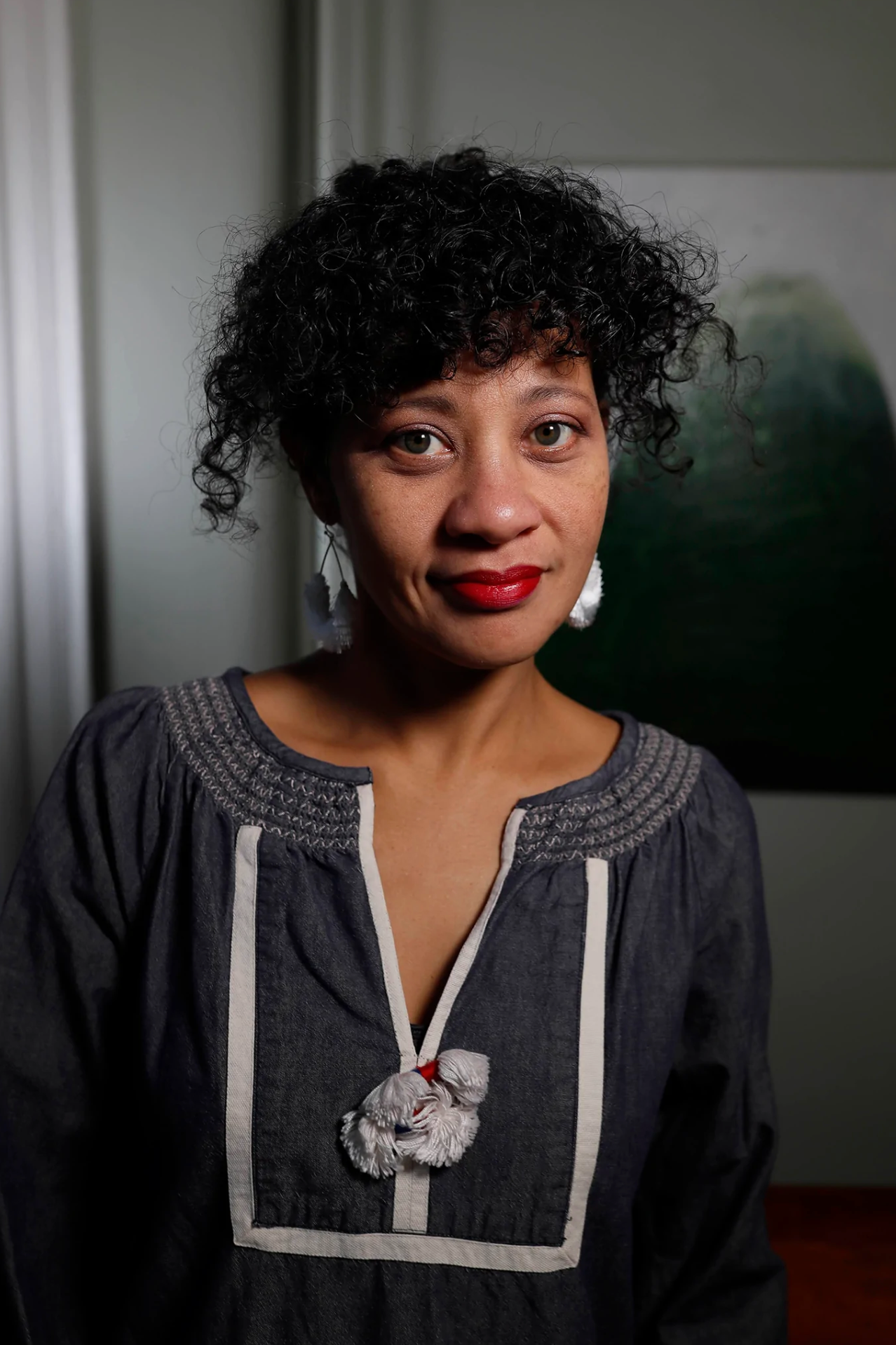No Products in the Cart
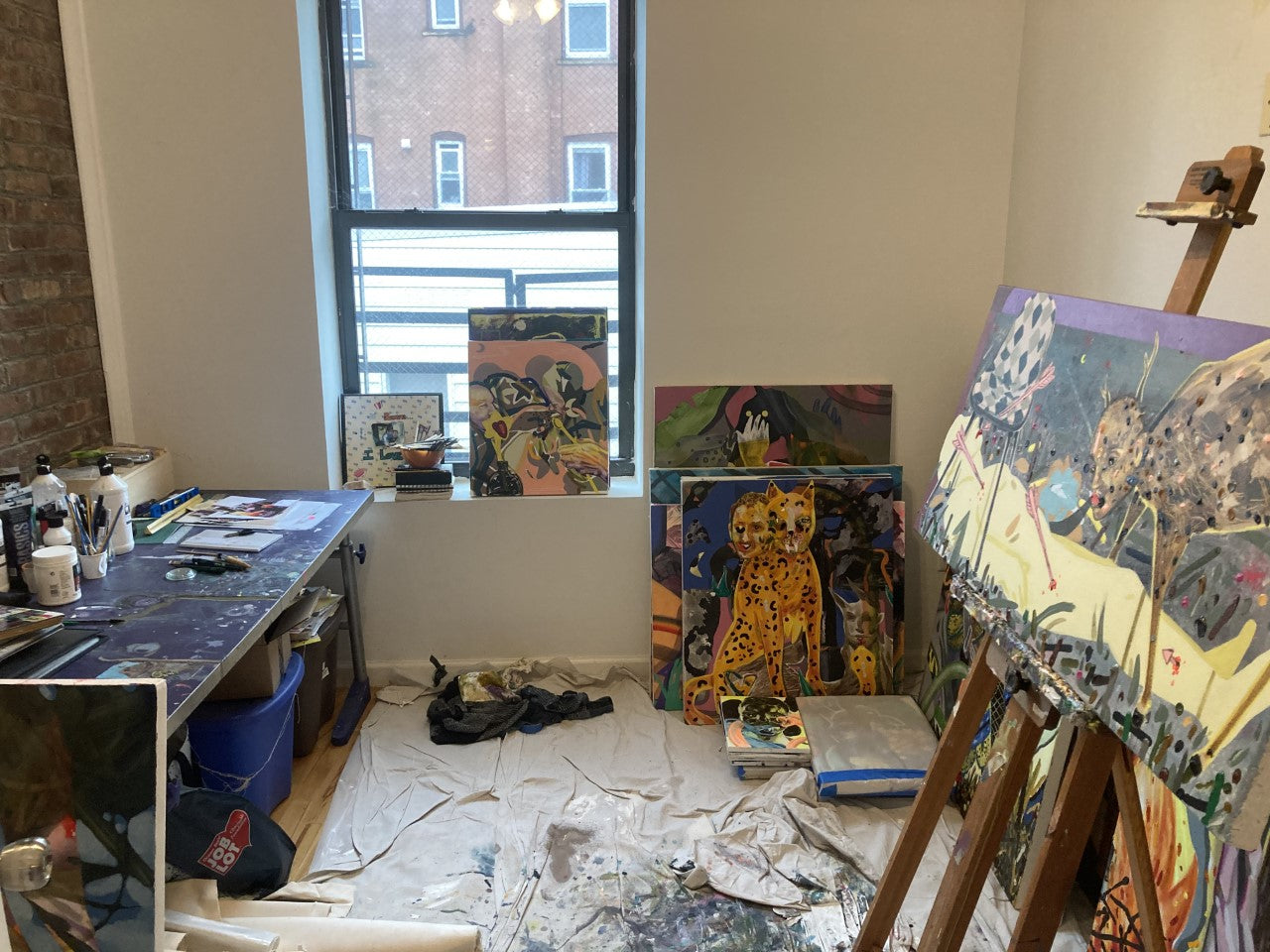
Meet Daniel Morowitz

Ivory tower who? With Daniel Morowitz, you can be a fan of the classics and also fully live in the present. Talk of queerness mediated through horror movies, animal patterns, and fluid bodies ensue.
Hannah: Titles like “Great Red Dragon” and “Four Horsemen” hold places in the Western canon. What is your strategy for reinterpreting these images?
Daniel: One of the best advices I got about painting is that it is always beholden to its own history. My background is definitely in the Western tradition, what we learn in art history 101. I’m Jewish, which is funny because I’m drawn to Christian iconography - artists like William Blake who leans into the Revelations and apocalyptic imagery.

Detail of Great Red Dragon
What I work with now reflects my interest in monsters and chimeric figures, because I like the idea of queerness as monstrous. I even go back to horror movies from the 50’s where the monster is always the queer element preying on high school kids going to makeout point. You always have a “monster” interrupting heterosexual couples, which can be interpreted as queerness breaking up something “natural”.
William Blake or Hieronymous Bosch were using monstrous images as parables of what was going on in their contemporary world. So although I don’t ground my figures in the contemporary world - you won’t find an iphone or logo in my painting - I think about how to take a contemporary strategy to more canonical images. It’s like taking my own queer identity and injecting it directly into the canon in a haphazard way.

Detail of Four Horsemen
“Queerness has always been mediated through double-entendre, and despite advancements in openness and representation; there is still a power in language that can easily dissolve as soon as it comes into being.”
Hannah: What you said here made me think about the contradiction to the secrecy that still follows queerness - it is at the same time oppressive and empowering. In this way it operates like magic. How does one master this magic instead of being mastered by it? How do we talk about fantasy without fetishizing an identity?
Daniel: I always try to use the body as a shape or design element. I don’t want to be hierarchical. I always say that when it comes to painting the figure, they can be just hands and faces, and you can slop through the rest of it. Because that’s where the expression really comes from, they can be the most seductive.

Hannah: Looking at some of your paintings that read like portraits, what is the meeting point between personal experiences or observations and reimagined mythologies?
Daniel: When I finished grad school five years ago, I was weighed down by more academic, traditional oil painting - using my partner as a model, or self portraiture. It was pretty labored because I wasn’t quite connecting to it. I would use people close to me as models, but forcing them into a style that wasn’t my own.
Six months after graduating, I emailed one of my professors with what I was working on, and she replied: “Oh, they’re very imaginative, but they’re full of drawing errors”. And I was so furious at that, I said, “fine, if it’s full of errors, I’m going to go more abstract.” Then I switched from oil to acrylic, too. That really freed me up, things became more colorful, I was more interested in making shapes and balancing them out.
It was a slow process because I was still super tied to photo references, but then slashing parts with more abstract shapes, playing with how acrylic pours and smears, carving out spaces instead of painting them on…
In the end, I had to let go of the pressure to measure up with other gay painters who would paint themselves or with their partners. I call it “polished pornography”. I would instead slowly transform figures into centaurs or minotaurs, maybe he has a tail or horns.

Detail of Table Top
Hannah: I do think what did survive from those “muddy oil paintings” is depicting the body and surroundings as made of one flesh, one material.
Daniel: If I can help it, I like to carve the figure out as negative space than filling it in. To carve out the space as almost a transparent figure. It’s a push and pull between figures being foreground and also being part of the background.
When I started employing that strategy is when I stopped thinking of my own queer identity less as overtly pornographic figures and more as figures existing both outright and blended in camouflage with the background. It’s like us queer people existing both outright and in the shadows, in a double-space in society.
I also like to pair figures with colorful, patterned animals. These animals are monstrous, but instead of being repulsive, the bright patterns are an announcement to other creatures to stay away because they’re dangerous. It’s again that doubling of attraction and repulsion.

The steps to Mana Contemporary
Hannah: So many artists are relocating right now, away from the city. Being based in Jersey City what’s your take on this prediction that NYC will soon cease being a “hub”?
Daniel: I think the city has always been a hub and has name recognition - and will always have that. At the same time, because of the popularity it’s a big draw in every direction including big businesses trying to reshape areas.
I’ve definitely noticed places like Hudson and upstate, or parts of Brooklyn, grew and blew up as Chelsea and LES became inaccessible. The art world is going to spread out wherever it can find ground and stick.
Still, New York City still has a history to it you can’t transplant somewhere else. Jersey City right now is under so much development that there is a lot of art being tied to real estate - a condominium opening up with a gallery space for example. But I haven’t seen a Chelsea or LES gallery relocating here yet.

From Curious Matter's exhibition A Flawed Trinity
Hannah: Any particular resources, galleries, or just sources of inspiration artists should know about in NJ?
Daniel: We have Mana Contemporary, a huge artist studio and gallery with gigantic space. It probably has the closest connection to what goes on in the city - I know artists there had shows in Chelsea and LES.
There are good spaces here too, I worked with a gallery called Nevado Gallery, attached to a condominium in downtown Jersey City area. There are two gallerists named Reina and Arthur who run a gallery called Curious Matter in the foyer of a brownstone building. It’s a beautiful space that puts on intimate, quieter shows. It’s a good model for shows not trying to be as polished as in the city but also not attached to developments.
A lot of curators live around here too. Enrico Gomez, an independent curator and gallerist, partnered with Nick Schapiro who runs Proto Gallery in Hoboken, to open Proto-Gomez around Chinatown. Between them, they have the bridge of people in NJ and Manhattan.

Hannah: Has quarantine made any lasting changes in your daily routine, either personal or creative?
Daniel: Where I’m really hitting now with paintings came in the past few months. One, I’m working from home with my day job. My studio is actually in my apartment and take a break, pop in, work a bit on painting, then pop back to work - whereas usually I only have that freedom in early mornings and evenings.
Also, when things were in full swing I’d go to openings and go see art a lot. Which is good because you need to know your industry, but it also led to an impulse to be more strategic than authentic. Now without the pressure of fitting in, I can be a bit freer with working.
Actually now I’m doing more drawing than paintings - watch cartoons, work on drawings at night, have it be more mindless and meditative, work without source references. I usually always worked with source references but working without them feels freeing. So I’m considering turning some of these drawings into paintings as well.

Hannah: What are you reading / watching / listening to recently?
Daniel: Oof, I always want to say “I’ve been reading critical queer theory, Judith Butler, Derrida and whatnot” - but I haven’t picked that stuff up since grad school. I used to love it, but then I found myself living so differently from theory. I had to check myself at one point - you can’t create a physical identity in the theoretical space.
The last thing I read is, I really pounded through Armistead Maupin’s Tales of the City. And I watch a lot of cartoons!
I watch a lot of Rupaul’s Drag Race.
I love Season 2. I find it to be the meanest season. They still didn’t know where the show as gonna go so people weren’t self producing as much as now where they come in with a full designer wardrobe and prepackaged tagline. Back then it was like “you bought that dress from Forever 21”.
Myself, my partner, and my friends, we do drag - we’re not drag queens but - we’ve all joked that we could never try to be a drag queen because it’s gone so mainstream to a point where a mother takes a ten year old to Sephora and have a beat of makeup than you.

Hannah: What’s in store for you in the coming months?
Daniel: Project wise, a little more drawing and turning those into paintings. Or even stringing them together and creating a narrative. There’s not going to be a huge paradigm shift.
For showings, I’m going to do more business reachout. And I have two online shows at the moment with Flatfile and another one through Artrabbit called Suddenly Last Summer.
All studio photos by artist Daniel Morowitz.


